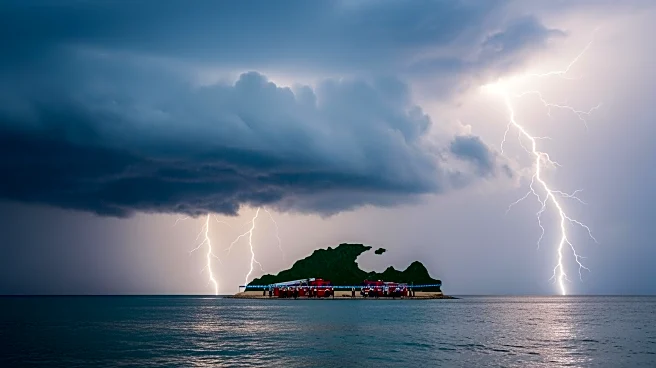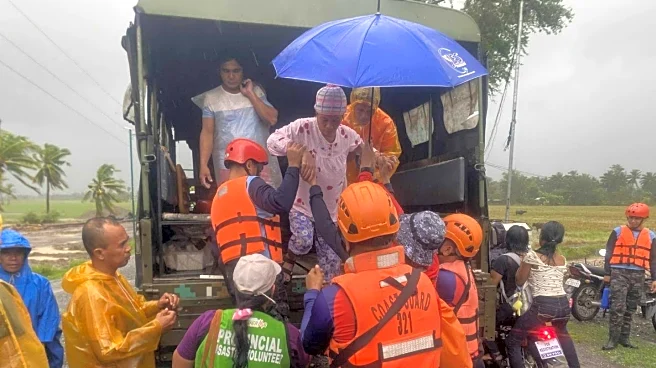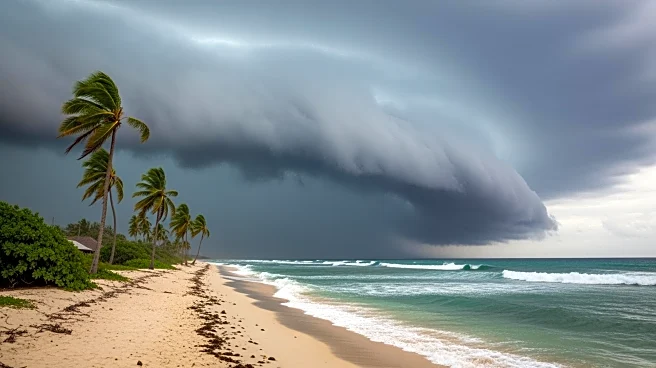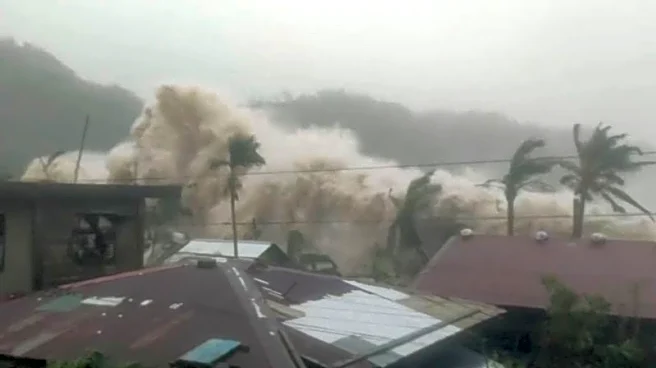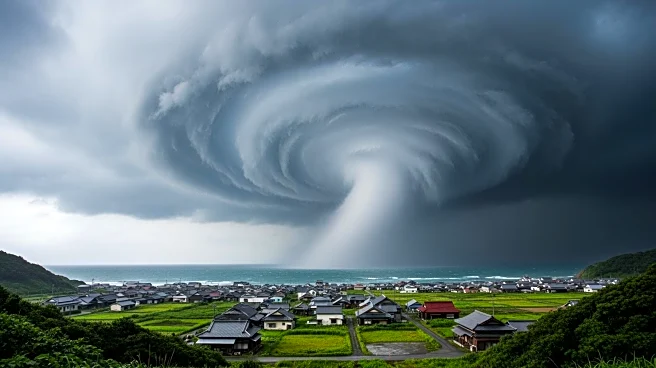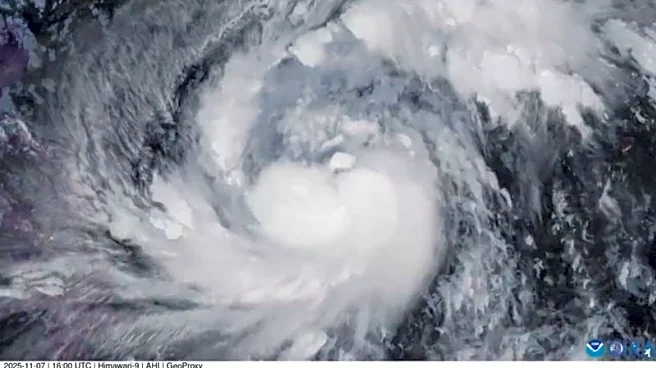What's Happening?
Typhoon Fung-Wong has hit the Philippines, resulting in the deaths of at least two individuals and the evacuation of approximately 1.4 million people. The storm generated massive waves that impacted coastal
areas, including the village of Gigmoto in Catanduanes, where water surged between houses, creating river-like conditions in the streets. Another affected area was the LA Sunshine Beach Resort in Dinadiawan, Aurora province, where waves crashed through the resort. The typhoon follows closely on the heels of Typhoon Kalmaegi, which claimed at least 114 lives in the Philippines less than a week prior.
Why It's Important?
The impact of Typhoon Fung-Wong underscores the vulnerability of the Philippines to natural disasters, particularly typhoons, which frequently cause significant human and economic losses. The evacuation of 1.4 million people highlights the scale of the threat posed by such storms. The repeated occurrence of deadly typhoons in a short period stresses the need for improved disaster preparedness and response strategies in the region. The economic implications are also significant, as infrastructure damage and disruptions to daily life can hinder recovery efforts and strain resources.
What's Next?
The immediate focus will be on rescue and relief operations to assist those affected by Typhoon Fung-Wong. Authorities are likely to assess the damage and begin recovery efforts, which may include rebuilding infrastructure and providing aid to displaced individuals. The government may also review and enhance its disaster preparedness measures to better handle future typhoons. International aid and support could play a role in the recovery process, as the Philippines often receives assistance from global partners following major natural disasters.
Beyond the Headlines
The frequent occurrence of typhoons in the Philippines raises questions about climate change and its role in intensifying weather patterns. There may be long-term implications for coastal communities, which could face increased risks from rising sea levels and more severe storms. The situation also highlights the importance of sustainable development practices that consider environmental risks and aim to reduce vulnerability to natural disasters.
